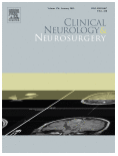 Neuromuscular diseases are very diverse in their presentation and clinical expressions. Swallowing disorders occur in some of them predominantly, for example Duchenne muscular dystrophy (DMD), Steinert’s disease (DM1), amyotrophic lateral sclerosis (ALS), oculopharyngeal muscular dystrophy (OPMD)… These disorders can be the cause of very disabling situations.
Neuromuscular diseases are very diverse in their presentation and clinical expressions. Swallowing disorders occur in some of them predominantly, for example Duchenne muscular dystrophy (DMD), Steinert’s disease (DM1), amyotrophic lateral sclerosis (ALS), oculopharyngeal muscular dystrophy (OPMD)… These disorders can be the cause of very disabling situations.
Dysphagia is classically explorable either by fluoroscopy or through an endoscope. In an article published in September 2020, a Japanese team investigated the measurement of lingual pressure as a possible complementary investigation, both precise and easy to use outside the hospital setting. A sensor connected to a small device (called IOPI) measures the maximum pressure exerted by the patient for 3 to 4 seconds between the palate and his tongue. Tested in 180 adults with DM1, 242 with DMD and 147 with ALS, the device, which is easy to use on an outpatient basis, has been shown to be efficient and reliable, even compared to fluoroscopic studies. It also made it possible to determine pressure thresholds beyond which an appropriate diet (mixed, ground, etc.) or enteral nutrition had to be implemented. These thresholds vary from one pathology to another.
